The Tale of Two Races: Revenge of the Rattlesnake and Little Sugar 100K
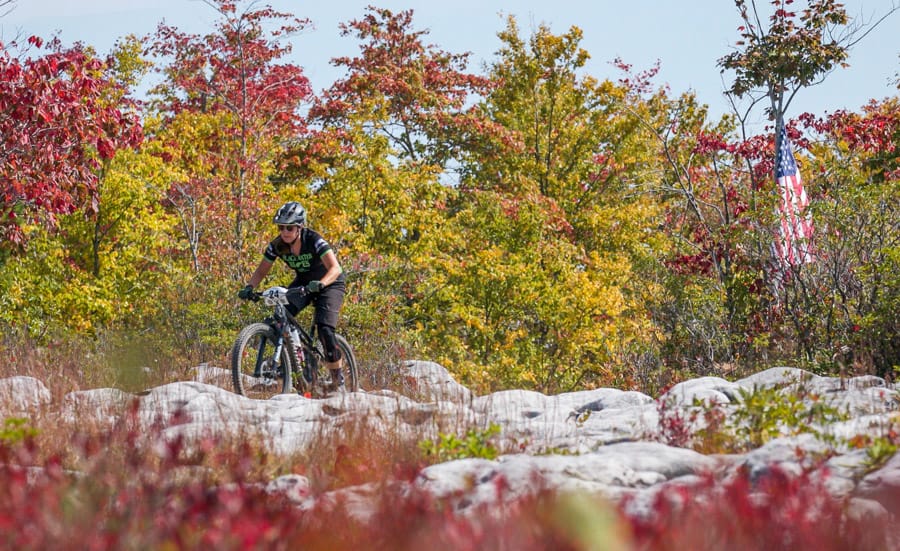
I know it's over when I start walking. Sure, I'll finish the race, but not in the time I set for myself. Pushing the bike is just surviving. I try to tell myself I'm saving energy, this is smarter, blah, blah, blah. But the truth is, I'm running out of energy. Walking is where all the training, nutrition, and preparation meet their match. Walking is the wall.
Walking in a race gets under my skin. It usually begins gradually. The climb is so steep that I jump off, hearing Rebecca Rusch in my head, "Walk with purpose." I figure this slight run is better than the grind. Or, I might make a technical error and decide it's easier to reset on that flat spot up ahead. Usually, walking is preceded by taking a short break to eat instead of eating on the go. One leg down, peel open the gel and suck it down. It can't take that long, can it?
Walking is also contagious, like a yawn. You see someone else do it, and the next thing you know, you're doing it yourself. I've learned to resist that copycat urge and question whether I need it. But once the walk breaks have begun, they are doubly hard to resist.
The Tale of Two Races
Post-Leadville 2024, I had two races on the schedule: one in my backyard, the 24-mile Revenge of the Rattlesnake, and one 1,000 miles away in Bentonville, Arkansas, the Little Sugar 100K. Both were mountain bike races on predominantly singletrack, but that's about where the similarities ended.
The Revenge of the Rattlesnake is in its 41st year with quite a storied past. Previously promoted by Blackwater Bikes, it is now a fundraiser for the Blackwater Bicycle Association, our local IMBA chapter, who worked tirelessly to get the trails into tip-top condition before the race. The route changes almost yearly but always starts and finishes in Davis, West Virginia. The trails often include some of the area's most famously difficult singletrack, such as the ancient Plantation and Davis trails. 2024 was the first year one of Davis' newer flagship trails, Splashdam, made the cut. Often, the route traverses the otherworldly Moon Rocks and rocky Hoodoo Trail.
Whatever the course, the Rattlesnake is always rocky, rooty, and rowdy. The climbs are steep, technical, and long. The descents are as fast and furious as you want them to be. Most years, the course is peppered with trail-wide puddles, deep mud pits, and streams running across and down the trail. It's a true nature-made adventure race.
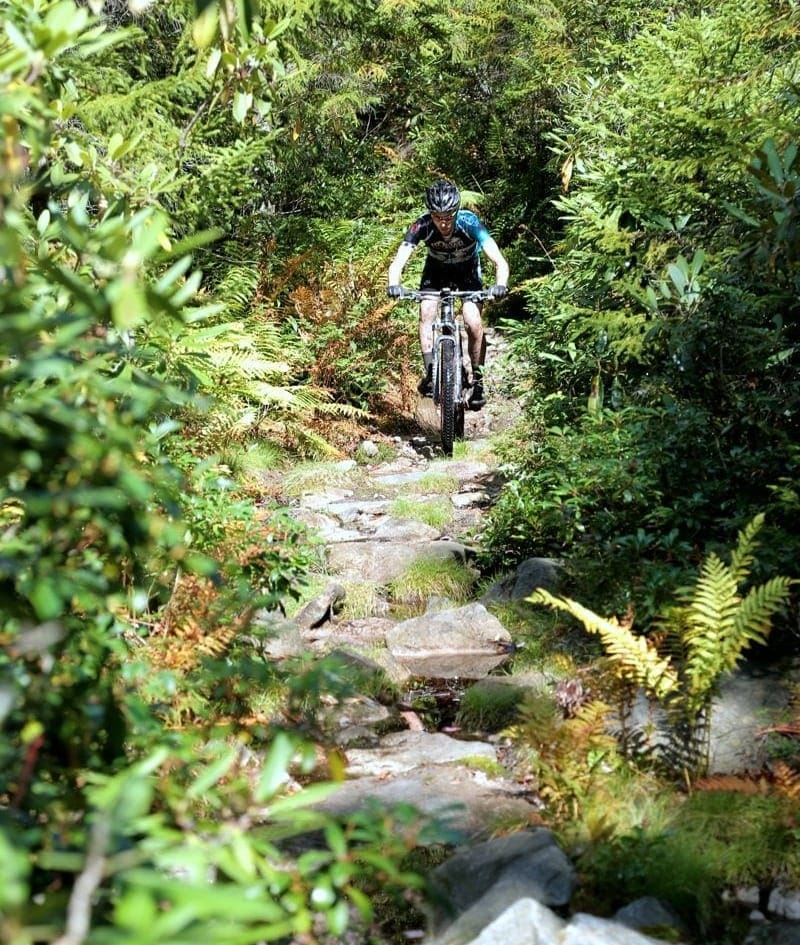
Little Sugar is less rowdy. The 100K (62 miles) distance would be soul-crushing if the course was anywhere near as technically challenging as the Rattlesnake. But that doesn't make it easy. Miles of fast, flowy descents are constantly interrupted by steep climbs. The loose-over-hard gravelly trails weaved together via endless switchbacks keep your eyes facing only one direction: forward. One long stretch of trail is aptly called Tunnel Vision because that's what you need to stay upright. Both races have about 100 feet of climbing per mile (according to actual ride data). But Little Sugar's looks like a roller coaster compared to the Rattlesnake's long climbs and descents.
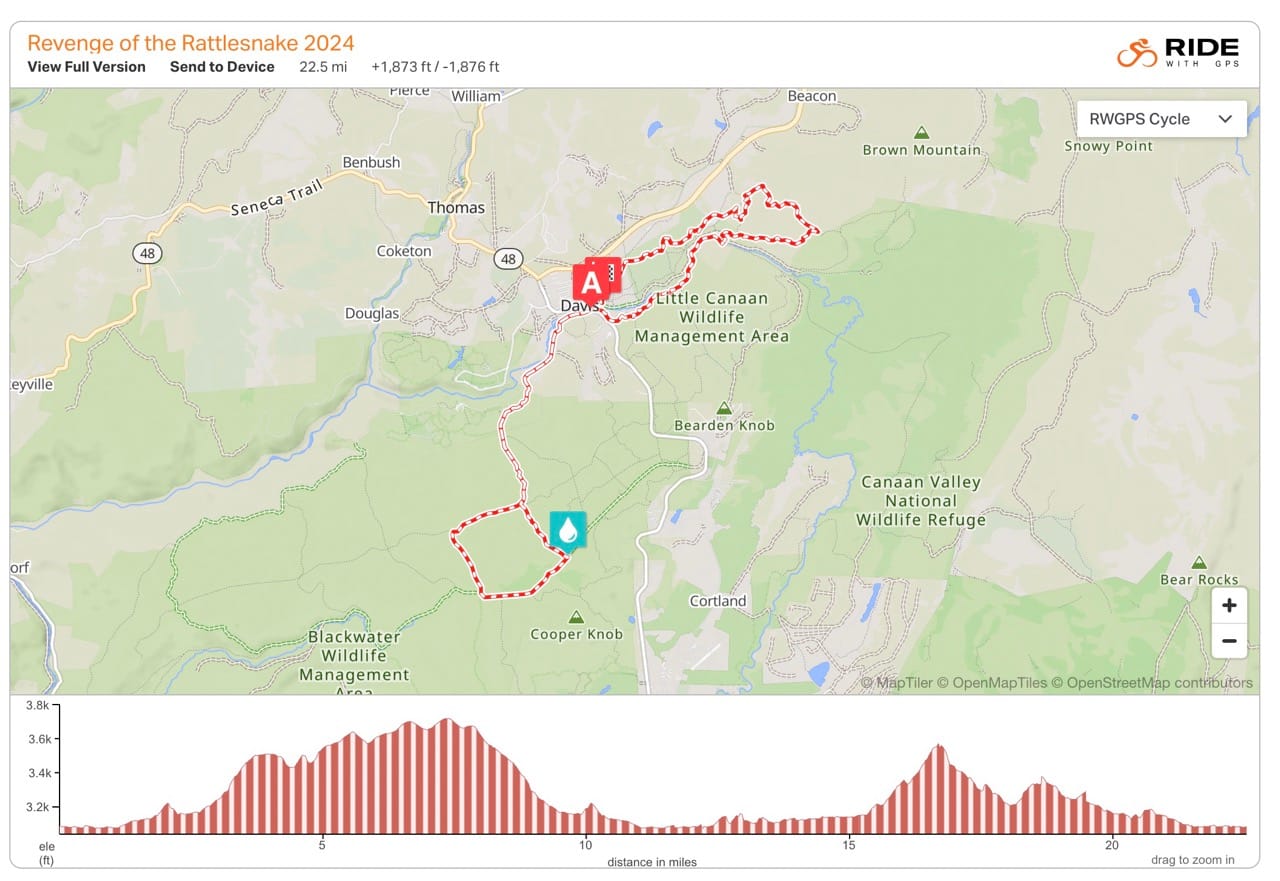
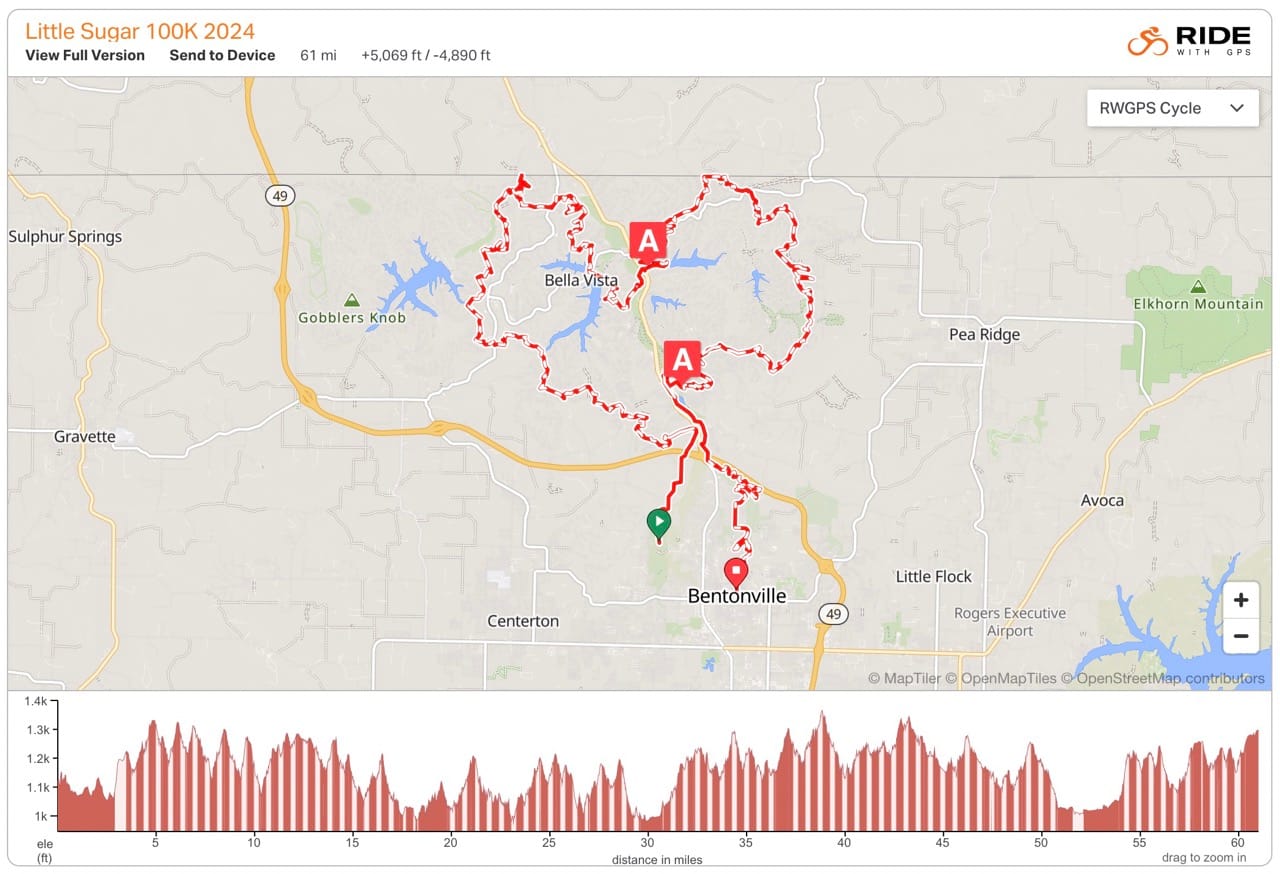
Revenge of the Rattlesnake: Home Court Advantage
Preparing for the Rattlesnake was a blast. I had a great excuse to ride some of the most iconic trails in my backyard on different bike setups. I decided to race my Specialized Epic Evo as I did for the Leadville 100 a month earlier. My go-to on these trails is usually my Yeti SB130—more travel, more tire, more fun. But the Epic turned out to be refreshingly fast on the climbs, and navigating the technical terrain was exciting on a bike less forgiving. I popped on my flats for added confidence, for I knew the power dab was my friend on these trails.
At the beginning of the race, I was off and walking a few times. Climbing up the steep, rooty boulder field that is the Davis Trail was extremely challenging. It is entirely ridable, as plenty of racers at the front proved. But hopping off here and there actually saved me energy, and at that point in the race, I embraced the brief hike-a-bikes without remorse.
With all the pre-riding under my belt, I had an ambitious but realistic time goal (for me). I'm becoming more familiar with the extra edge that racing offers—be it the adrenaline, the extra carbs, or the intense focus—racing makes me ride faster.
This year, the Rattlesnake neatly divided itself into two loops, and the second loop had the potential to be slightly faster than the first. The heart-pumping climb up Canaan Mountain gave way to a short "flat uphill" traverse and rewarded us with a thrilling descent of the entire Davis Trail. There's not a lot of opportunity for recovery on these descents while the upper body endlessly absorbs the chatter of loose rocks and rooty drops.
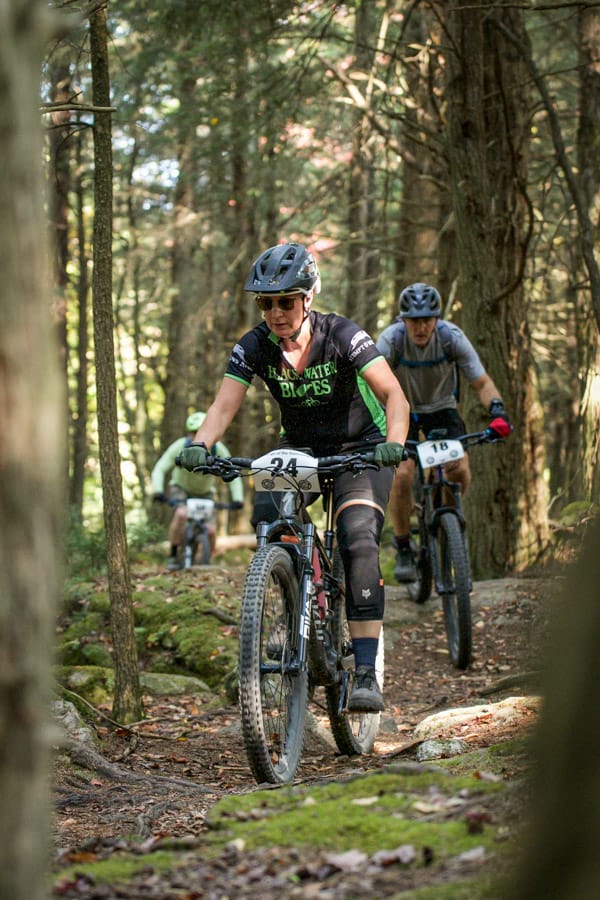
As I rolled into the aid station at mile 13, I was slightly ahead of my goal time, a psychological boost as I continued onto the Spashdam Trail, a purpose-built bit of singletrack that boasts long stretches of picky rock gardens best navigated with momentum and focus. While it does even out into a gentle, winding path along the river, I found it hard to shave off any time in this section. Exiting the trail, making a quick pitstop at the bridge, and checking my time, I saw I was no faster than my pre-ride. Drat.
As I ascended the next climb of about 1.4 miles, Hoodoo, a trail littered with rock gardens and, you guessed it, roots, I started to feel my legs. This next push was going to take its toll on my time. I'd cleaned it multiple times in my pre-rides, but I made silly mistakes during the race, walking a few steps here and there to gather my wits and catch my breath. While I never walked any significant distance, just those few steps were enough to let me know I was slowing down. It's a demoralizing revelation with a quarter of the race left.
Navigating Moon Rocks was pure fun, a great payoff for all the hard work to get there. There was still plenty of climbing left in those final miles, but the path home eventually smoothed out into a pedally section along Beaver Creek. I made it home squarely in the middle of my goal time window and placed third in the women's race.
Little Sugar: Making the Switch
The Revenge of the Rattlesnake and Little Sugar were held during a severe drought. In both cases, the trails were as dry as they've been in recent memory. This worked out in our favor for the Rattlesnake, but it whipped up some challenges for Little Sugar. As mentioned in my previous post, the trails were extremely dry, dusty, and loose. I was a bit taken aback by how much this affected my riding; most days, a dry trail in West Virginia would qualify as sloppy wet in Bentonville.
Little Sugar is not in the Life Time Grand Prix, but a handful of Grand Prix athletes, along with other pros and elites, seek out the race. Therefore, there is an elite men's start, an elite women's start, and an age group start. This allowed me to cheer on the pros as they took off.
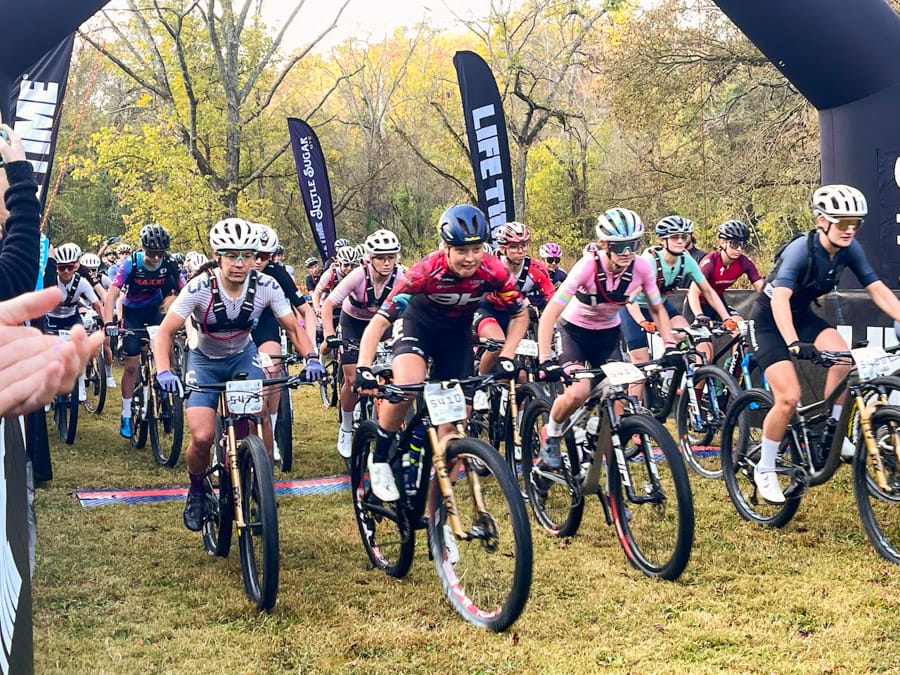
I am nervous before every race. But seeing the pro women lined up and ready to charge, I realized that I have nowhere near the stress they do. My desire to finish in a certain time is for my own gratification. It doesn't affect my income, standings, or sponsorships. It was such a freeing thought, and I instantly relaxed while feeling grateful to have the same opportunity as they do: to ride in an expertly managed race over 60 miles of classic Bentonville singletrack.
I noticed the butterflies subsided as I took my place in the back of the pack. We had a one-mile neutral start along roads and a wide-open climb ahead. I had no interest in fighting for a spot off the top, but maybe that will change one day.
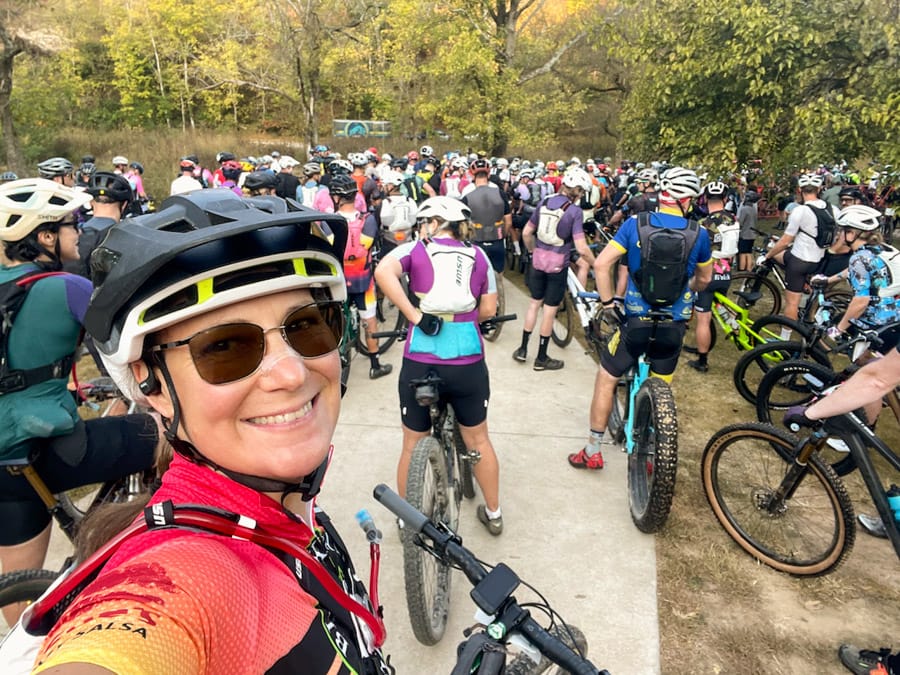
Last year, the first three miles were neutral. This year, the group spread out significantly, with racing beginning after the first mile. This cut down on the stop-and-go traffic as we entered the singletrack. Almost right off the top, we headed into some of the steepest, loosest switchbacks of the day. My practice earlier in the week paid off, and I quickly started enjoying the course. The climbs took extra work on my flat pedals, but I zoomed down the descents and crushed the techy sections.
As the temperature heated up, I was grateful for my new USWE hydration pack, which made it much easier to keep up with my fluid intake than bottles alone.
As I rolled into the first aid station at mile 30, I was on target for my 8-hour time goal. I refilled my pack and bottles, grabbed every gel I'd packed for myself, and headed off. Even with the help of volunteers, I was stopped longer than I planned. I moved on to the second half, trying to recall if the internet thought the east or west side was "easier."
Uphill on a Downhill Trail
Most of Bentonville's trails are bi-directional. However, as the day wore on, I couldn't help but feel like I was riding uphill on downhill trails. I stopped one more time at mile 45 for water and was slightly behind pace for my goal. I knew if I pushed it, I could come really close, if not reach my target. It's hard to say if that thought triggered the decline or if it was already in motion after 45 miles of dry, dusty work.
I always wonder what I'd be capable of if I could keep my gut completely happy in a race. I ate around 80 grams of carbohydrates per hour while attempting to drink 650 ml of water per hour and extra sodium (temperatures reached 85 degrees). But, like clockwork, my gut started competing with my legs, lungs, and heart for attention. I might've skipped a gel or two, and I know my fluid intake was falling off. It's amazing what you can talk yourself into—or out of—7 hours in.
So, as you can imagine, that's where the walk breaks began. The steep uphill switchbacks and punchy climbs suddenly seemed impassable. I told myself I wouldn't make a habit of it, and I didn't. But as I pushed up an access trail along a jump trail while watching teenagers hoot and holler to the bottom, most of my mojo left the building. That looked fun. This...did not.
The course showed some mercy and spit us out on some paved pathways. It was great. I finally felt like I could pick up my cadence and shake out my legs. It was refreshing to simply pedal. I drank, I ate, and I stretched. I was beyond doing math for my pace, but I had high hopes. Surely, I was going to make up some time.
Oops.
I was lulled into a complacent state, following who I thought was a course marshal and sailing through the breeze. Suddenly, my Wahoo bike computer was beeping at me. It often gets confused under large trees, so I gave it a beat or two before paying attention. Yeah, it was legitimately upset. I turned around. I had passed the course marshal, so I asked if I missed the turn. He said yep, there's one back there.
I took the first turn I came to. The beeping continued. Eventually, I pulled out my phone with the map on it, tried to find my way through the spaghetti bowl of trails, cussed much more than once, and asked for assistance from some innocent bystanders, all to no avail. So, I backtracked further. Eventually, I saw a set of flags leading off the concrete pathway and into the woods. This was the missed turn, and the pavement was over.
I estimated I lost about 10 minutes to that mistake, and my pace had slowed significantly. I figured it was time to survive the ride home, grind out the climbs, and fully enjoy the descents. As I rolled into Bentonville, I suddenly realized I was about to finish the race. Sometimes, the end of a race takes so much focus that even thinking a few miles ahead to the finish is impossible.
Someone put a medal around my sweaty, dust-covered neck. I heard them call out my name and town, but best of all, someone handed me a perfectly chilled bottle of water, and he even opened it for me! A million times: Thank you!
I was on the phone with Bill almost immediately, telling him how much fun I had. It was hard, and he heard about that, too. But how could I not enjoy riding 100 km of purpose-built trails linked together by flags and arrows with police stopping traffic, all under a blue sky surrounded by 330 like-minded people? It was a great day on the bike, which is hard to beat.
That's a Wrap!
My post-race meal is almost as important as my pre-race meals. The night before, I cooked some chicken and rice and had a chocolate recovery drink recipe to look forward to. However, I completely forgot to eat any of this, and after cleaning up and putting away the bike, I headed to The Hub Bike Lounge for the awards and after-party.
The walk was a tad longer than I needed, but I was happy to be out of the saddle. Upon arriving, the smells of upscale pub food triggered my hunger. Suddenly, I was famished and remembered I had forgotten to eat. Their fancy chicken club hit the spot, as did the salty potato chips.
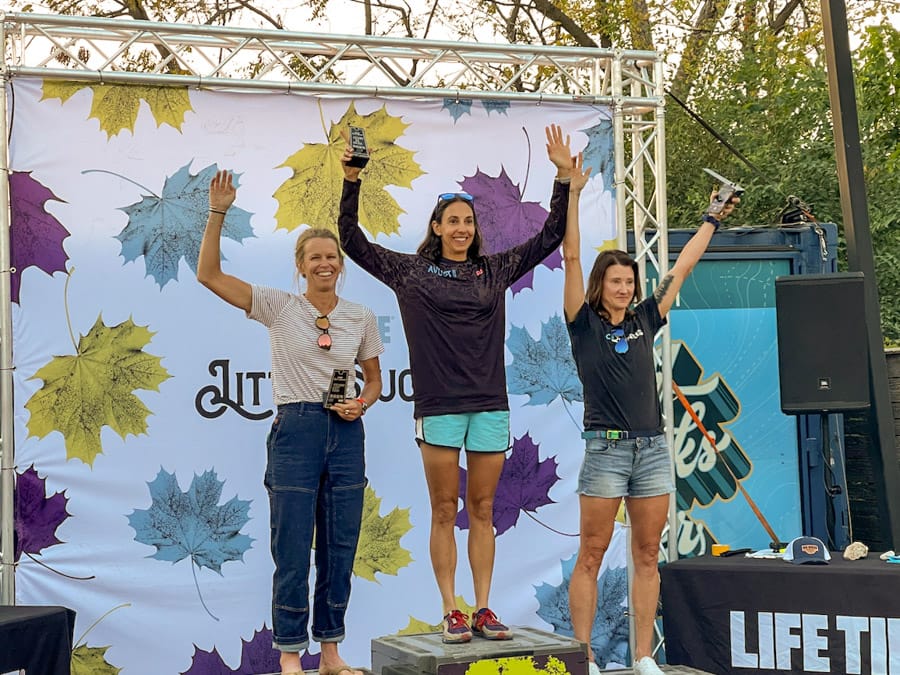
My 8:40 finish time (chip) got me nowhere near the podium. But I had another goal: win a coveted gold coin to enter the Leadville 100 MTB for 2025. After the awards ceremony, anyone interested put their number in a hat. Mine was drawn, and I had a week to sign up, which, of course, I did.
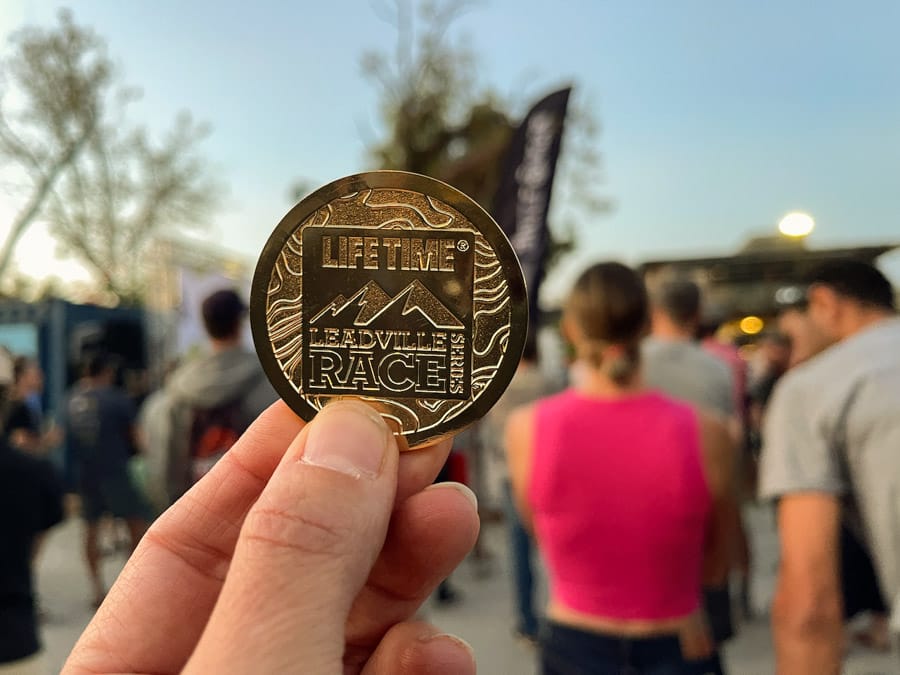
So Leadville is officially on the calendar for 2025, but it's a long way off. First, I'm taking a break from structured training to enjoy riding with my friends and Hazel. However, the Highlands Fat Bike Series, a five-race series from December 15, 2024, to March 9, 2025, provides valuable racing practice through the winter. The variable and often harsh cold-weather conditions also offer ample character-building opportunities.
Thank you to all of my friends, family, readers, and of course my local bike shop, Blackwater Bikes, for your support this year. See you on the trails!
If you enjoyed this story and it made you go "hmmm," please forward it to a friend. For more frequent meanderings, follow me on X @vweeks and Instagram @victoria.weeks.
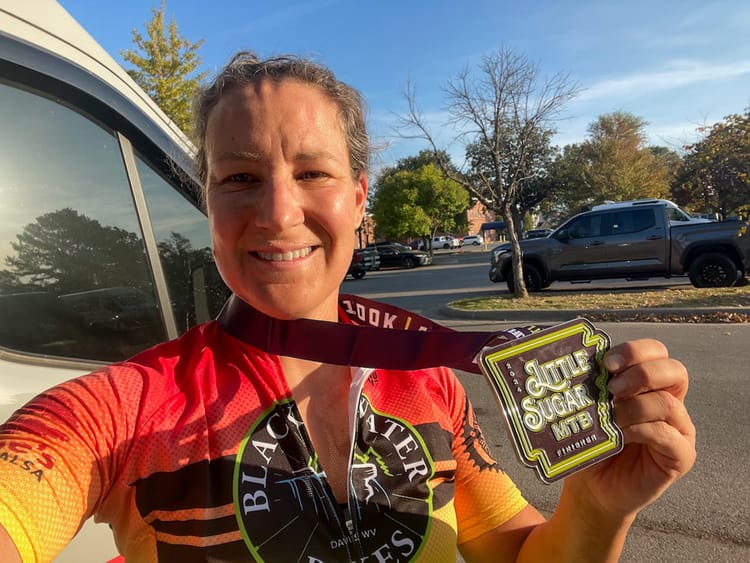
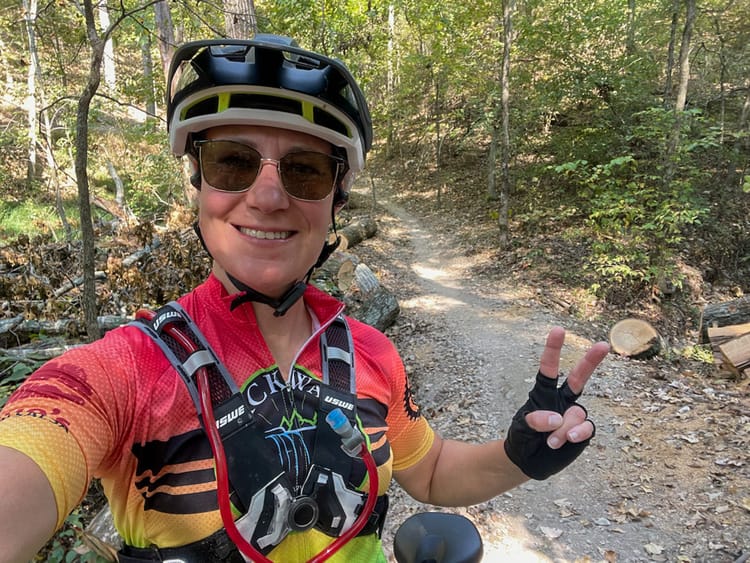
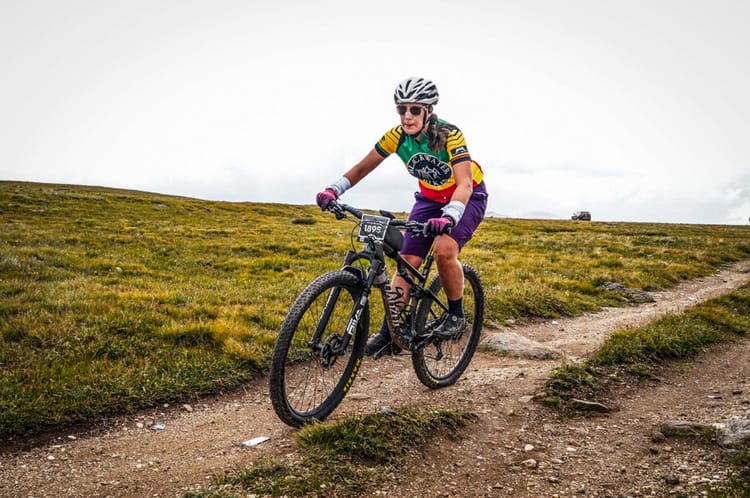
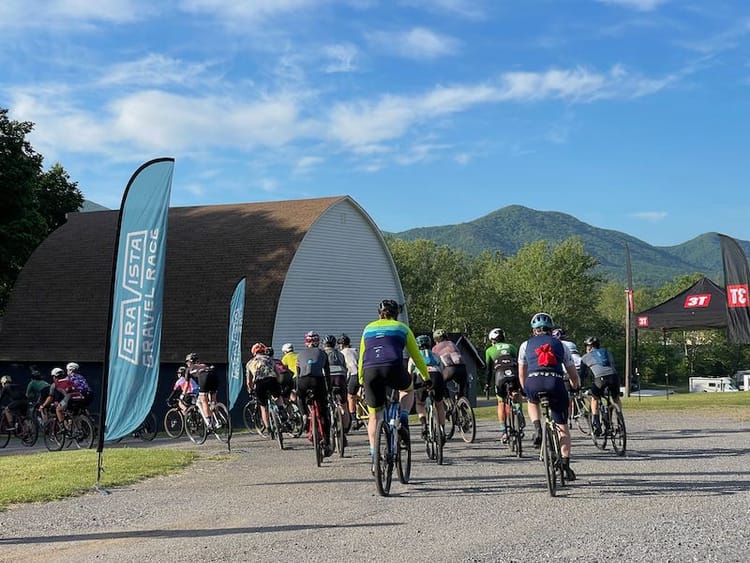
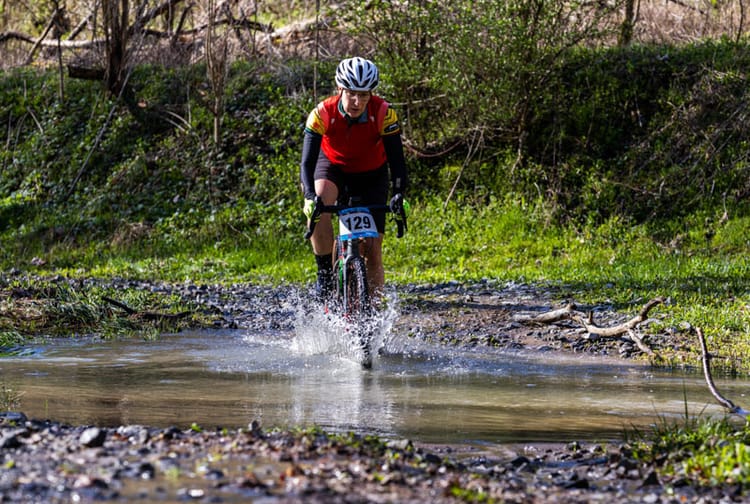
Member discussion